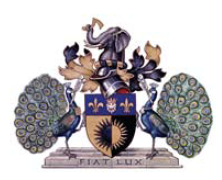History
Moorfields Eye Hospital was founded at Charterhouse Square in 1805 as the London Dispensary for curing diseases of the Eye and Ear, by John Cunningham Saunders, assisted by John Richard Farre. [3] It moved to a site on the former Moorfields in 1822, [4] before moving to its present site in 1899, and became part of the National Health Service in 1948. These anniversaries gave it the unique ability to celebrate a centenary in 1999 and a bicentenary in 2005. [5]
The new Richard Desmond Children's Eye Centre (RDCEC), was endowed by the publisher, Richard Desmond, and was opened by Queen Elizabeth II in February 2007. Its location is adjacent to the hospital's main City Road building. [6]
In December 2021, it was announced that the Moorfields building on City Road and adjacent building "Kemp House" had been sold to private developers, and that the hospital would relocate to a new facility near King's Cross railway station at the St Pancras Hospital site in Camden [7] [8]
Fundraising and associated charities
Founded in 1963, The Friends of Moorfields Charity is an independent registered charity, raising funds for the benefit of the patients of Moorfields Eye Hospital. The primary aim of this charity is to provide supplementary services and equipment for the comfort and well-being of Moorfields' patients and their visitors. It contributes towards buying much needed technical items for professional use in the hospital's clinics, satellite centres, operating theatres and research laboratories. The charity also promotes and manages a wide range of volunteers, supporting the work and service of the hospital. [10]
Moorfields Eye Charity is an independent registered charity for Moorfields Eye Hospital. Moorfields Eye Charity raises funds, above and beyond those normally provided by the NHS, to support and promote the work and research of Moorfields Eye Hospital, for the benefit of patients and staff, by raising extra funds to enhance services, research, equipment and facilities including a major joint – Moorfields and Institute of Ophthalmology, UCL – new building project. [11]
The Special Trustees of Moorfields Eye Hospital (charity number 228064) is a grant-giving body, which primarily supports research carried out at the hospital and research partners at the UCL Institute of Ophthalmology, alongside a range of other projects. [12]
This page is based on this
Wikipedia article Text is available under the
CC BY-SA 4.0 license; additional terms may apply.
Images, videos and audio are available under their respective licenses.


